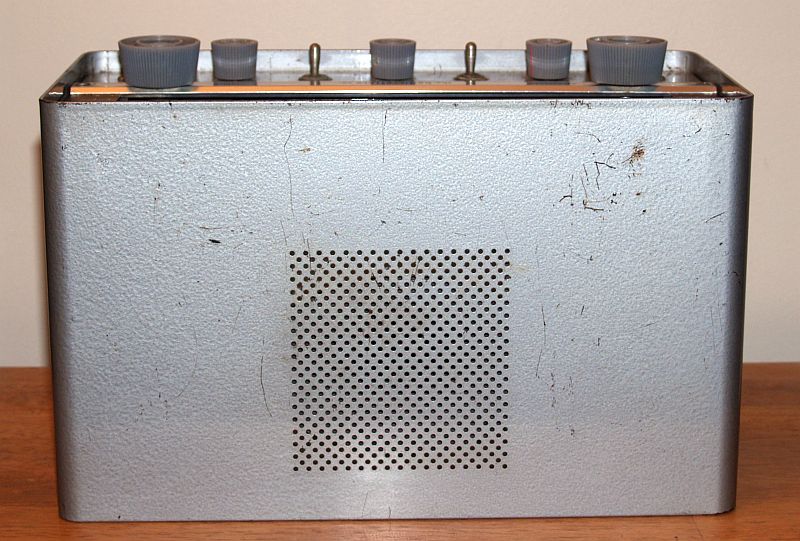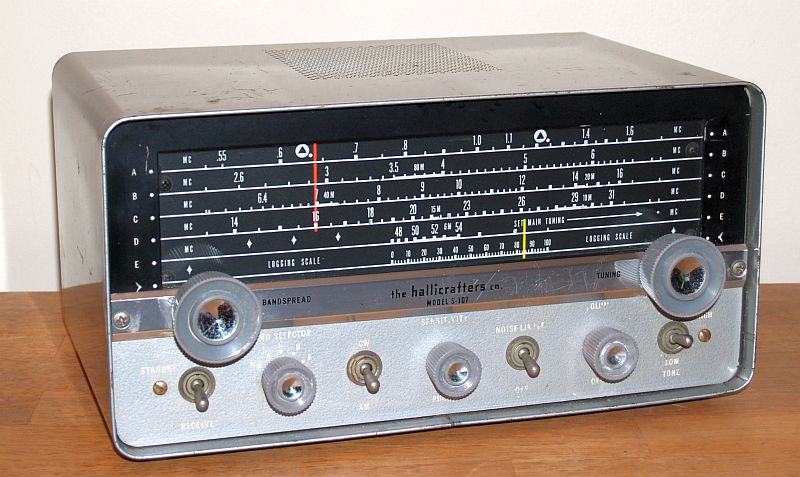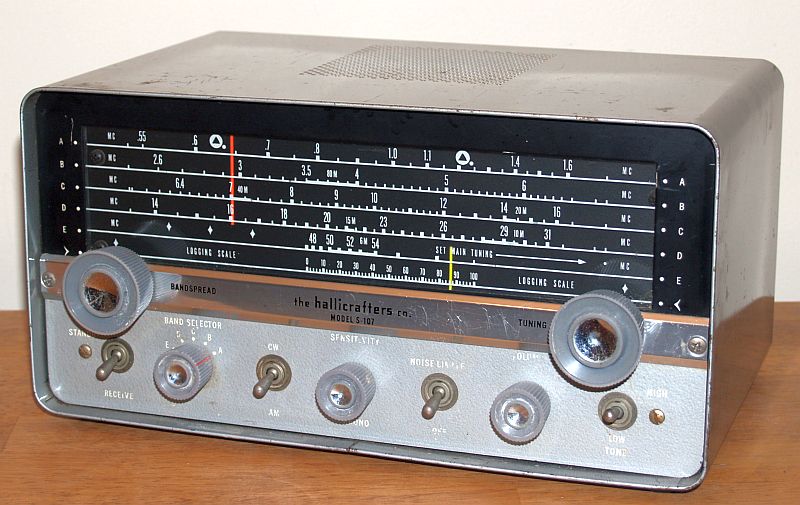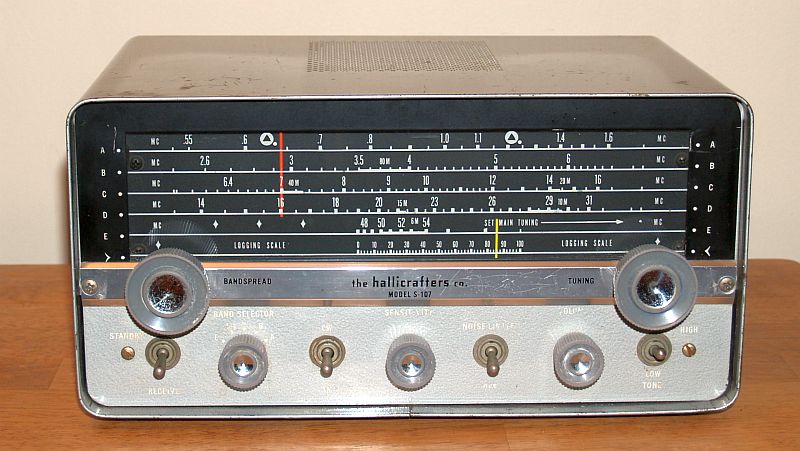
It receives both voice and CW (code) broadcasts with a built-in fixed-frequency beat frequency oscillator (BFO). A switch on the front panel selects AM or CW (code).
It is designed to operate from 105 to 125 50/60-cycle (Hz) AC current and has a transformer in its power supply - it is not an ac/dc set. Power consumption is 50 Watts.
A 5-inch oval Alnico V permanent magnet speaker is built into the top of the cabinet and tip jacks are provided on the back of the radio for plugging in a pair of headphones. A switch on the back panel selects the speaker or headphones.
A Receive/Standby switch on the front panel permits silencing the receiver without turning off the receiver. The receiver incorporates a diode noise limiter that is activated by a switch on the front panel. Another front panel switch is a tone control that selects "high" or "low" tone.
The receiver also has a sensitivity control. Normally one sets it to maximum (full clockwise). If hiss or noise is excessive or strong signals cause distortion or overload, one can slightly reduce the sensitivty by turning the control counterclockwise.
The radio has a main tuning slide-rule dial and a bandspread side-rule dial. The top dial scale is the standard broadcast band. The standard broadcast band is marked with the old "CD" (Civil Defense) emblem and a dot at 640 and 1240 kilocycles to indicate the former two official civil defense frequencies. In a civil defense emergency, one would tune to either of these two frequencies for official civil defense news, instructions, and information.
The shortwave bands are marked B, C, and D. Band E is the 48 to 54.5 MHz band. The bandspread is calibrated from 0 to 100. One sets the bandspread to 100 to make the main dial calibrated. Turning the bandspread tunes the radio down in frequency.
The radio has a phone jack on the rear where one can inject audio from a phonograph.
The radio was manufactured between 1958 and 1963 in three versions.
When I received this radio, it did work and in fairly good cosmetic condition. The speaker did have a small tear in the speaker cone and I repaired it. I cleaned it up and realigned the oscillator and RF stages. The radio works well and is quite sensitive.
Below is a picture of the bottom of the chassis.
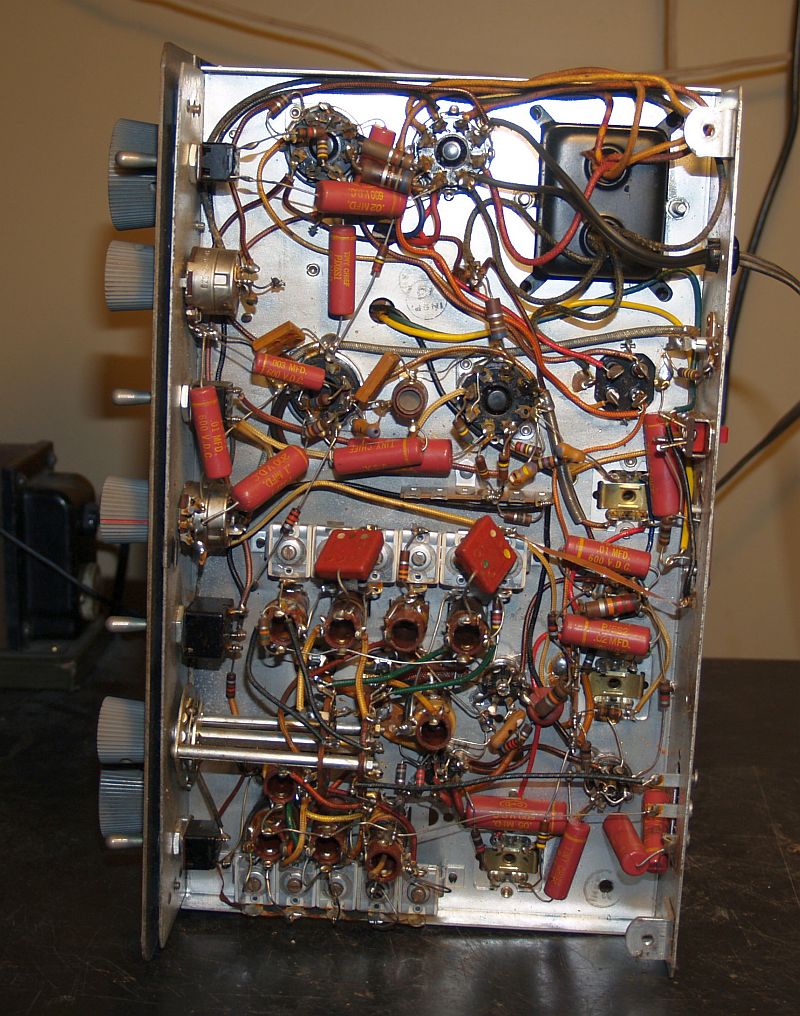
Below is a picture of the top of the chassis.
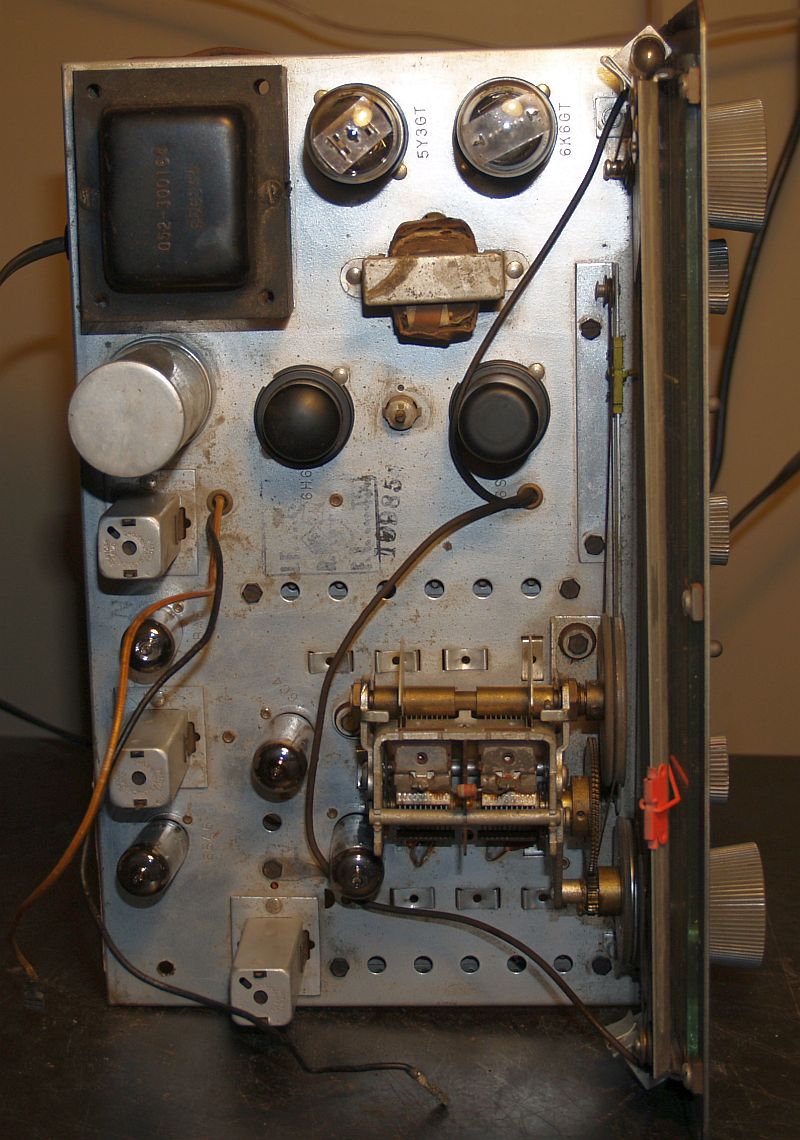
Below is a picture of a side of the chassis showing a portion of it that I cleaned before I cleaned the entire chassis. You can easily see the grime on the non-cleaned portion of the chassis.

Below is another picture of the top of the chassis from the rear.
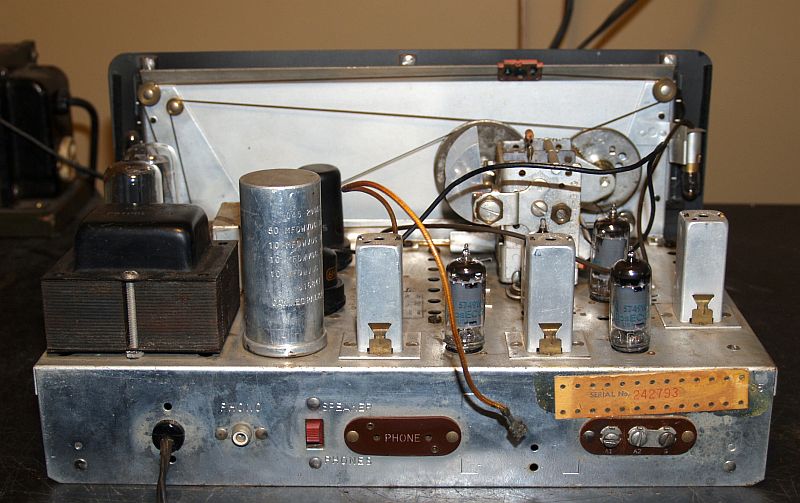
Below is a picture of the back of the radio.
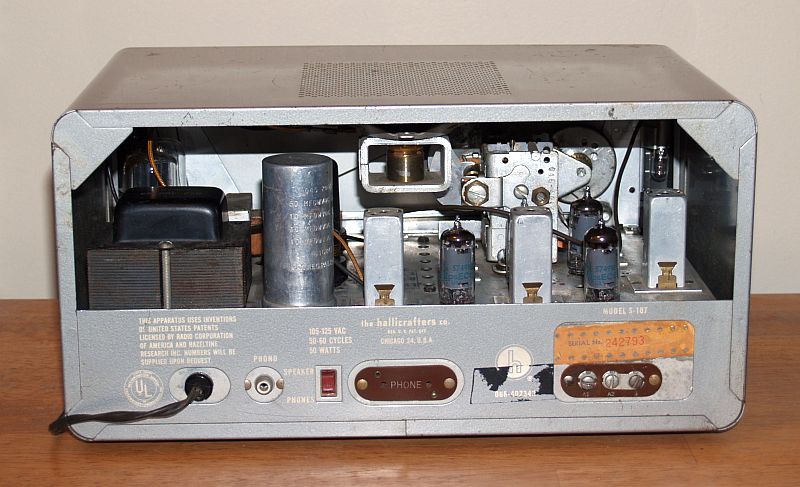
Below is a picture of the bottom of the radio.
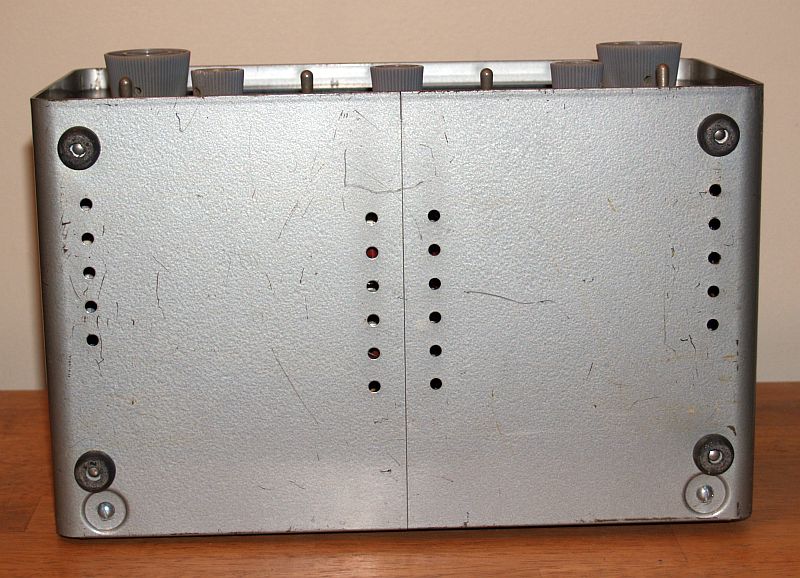
Below is a picture of the top of the radio showing the perforated holes for the speaker.
